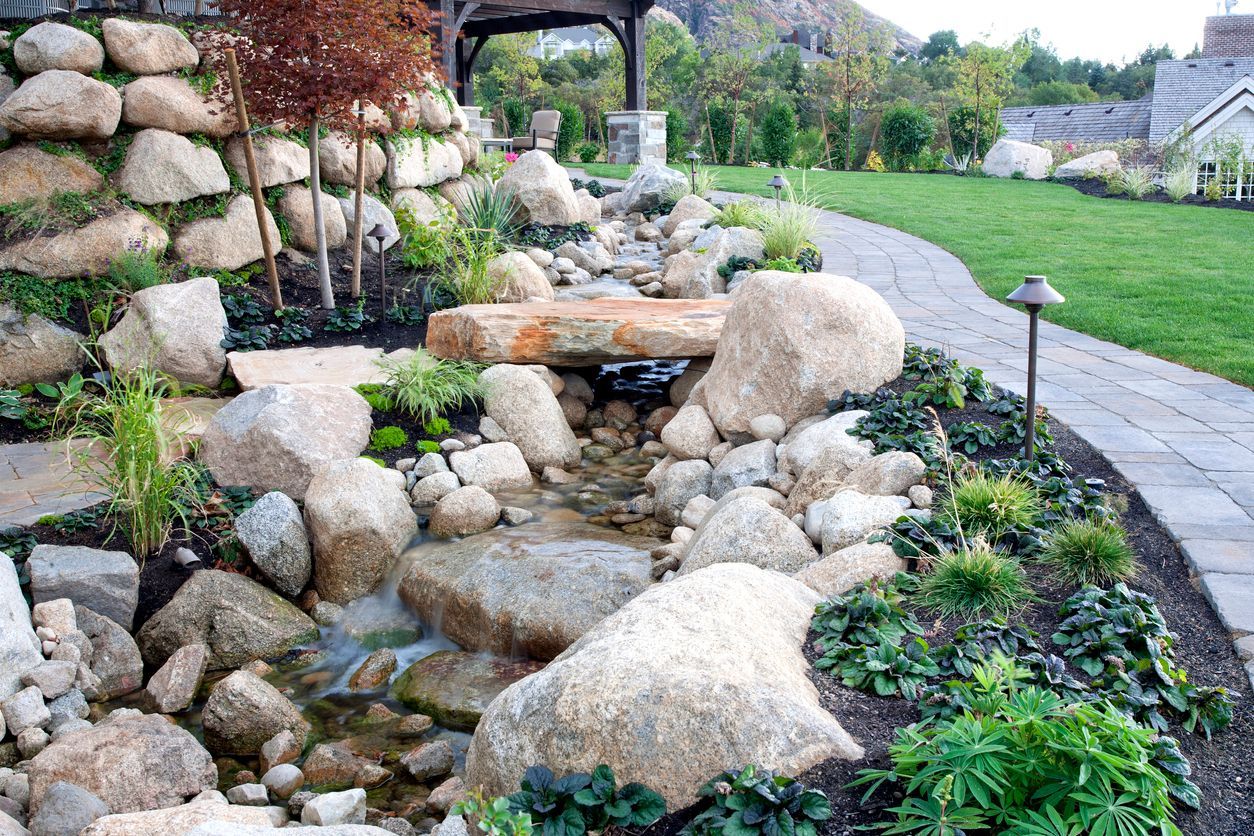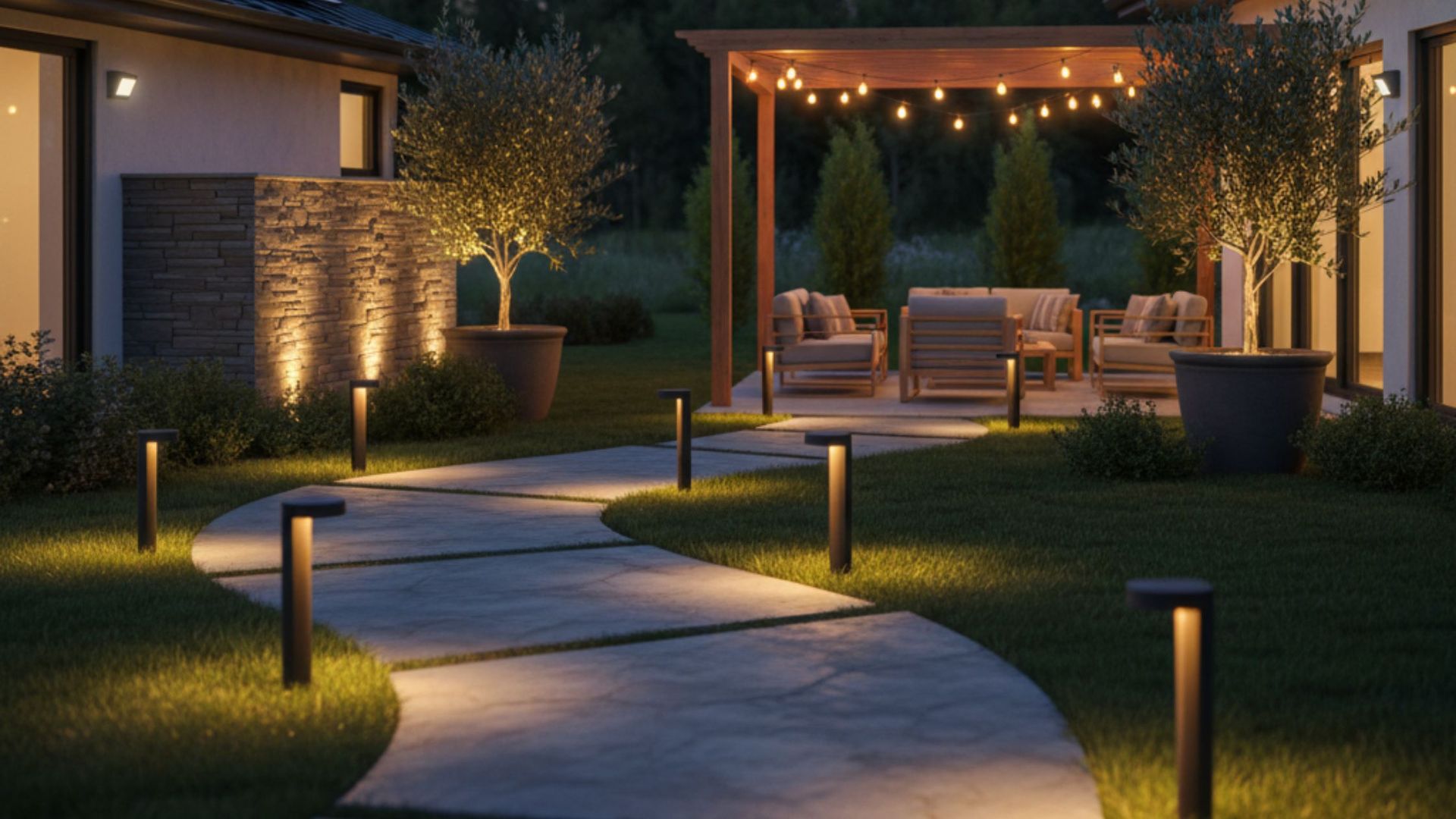Are There Specific Paver Styles and Designs that Are Popular in Hampton Roads?
Homeowners across Norfolk, Virginia Beach, Chesapeake, Suffolk, and the Peninsula are leaning into a coastal-modern patio look that balances charm, durability, and year-round functionality. When they search for a Paver Patio Contractor Hampton Roads, they’re usually trying to decode which paver patterns, materials, and accents actually hold up in a humid, salt-influenced climate with occasional nor’easters and heavy rain. The short answer: yes—certain patterns and design choices consistently rise to the top in Hampton Roads because they tolerate the region’s conditions and complement its architecture and shoreline palette.
The most-requested layouts remain timeless—herringbone, running bond, and modular ashlar—often framed by a clean soldier or sailor course. At the same time, the finish and feel are trending contemporary: large-format slabs, linear plank pavers, and porcelain pavers in driftwood grays and oyster tones that echo the Chesapeake Bay. Homeowners pair these with practical details—permeable bases for drainage, polymeric sand, and low-maintenance sealing—to keep patios stable and fresh through four seasons.
What paver patterns are most popular for patios in Hampton Roads?
In Hampton Roads, the herringbone paver pattern is a perennial favorite because it locks together under foot traffic and furniture without drifting, even through summer storms and winter freeze–thaw cycles. This zig-zag pattern can be set at 45 or 90 degrees and looks refined with a contrasting border, such as a charcoal edge against a buff body, or vice versa. Designers often run the herringbone “with the grain” of travel from house to yard to elongate the visual line and make modest footprints feel generous.
Running bond design is equally popular for its clean, linear rhythm. It’s a perfect fit for mid-century ranches, coastal cottages, and contemporary builds around Virginia Beach and Chesapeake, delivering a “subway tile” effect on the ground that feels tailored and calm. In smaller courtyards or condos, a tight running bond can make narrow spaces appear wider, especially when oriented horizontally across the short dimension.
Modular ashlar patterns—randomized layouts built from two to four different paver sizes—round out the top three. They introduce movement without visual noise, and they transition gracefully between zones, like an outdoor kitchen to a lounge area. In neighborhoods from Ghent to Great Neck, ashlar works beautifully with brick facades and fiber-cement siding, tying old and new together with a subtle, upscale texture.
Why choose a Paver Patio Contractor Hampton Roads?
Paver Patio Contractor Hampton Roads decisions are ultimately about expertise with local soils, drainage, and the details that keep a patio level and beautiful for years. A contractor versed in the region’s clay pockets and high water table will spec the right base: often a dense-graded or open-graded aggregate (No. 57 stone with a No. 8 bedding layer for permeable systems), compacted in lifts over geotextile to stabilize seasonal movement. That foundation work, more than any single design choice, determines whether a patio resists rutting and puddling.
Local experience also shows up in edge restraint and jointing choices. Concrete or aluminum edge restraints prevent lateral creep; polymeric sand or resin-based jointing stabilizes joints and resists weed growth between maintenance cycles. Along the Elizabeth and James Rivers, contractors often recommend a 1.5–2% pitch away from structures, with discreet channel drains or swales to manage downpour events. These invisible design moves protect mortar joints, base layers, and the home’s foundation.
Finally, a regional pro will right-size materials to coastal realities. Concrete pavers that meet rigorous standards for compressive strength and freeze–thaw durability fare well in Hampton Roads. Porcelain pavers—denser and highly stain-resistant—are surging for modern decks and rooftop terraces. Natural stones like travertine and bluestone add character but demand careful selection, sealing, and base spec for longevity. The best contractors pair aesthetics with technical chops so the patio looks great on day one and still feels tight after a dozen weather swings.
Materials, colors, and finishes that fit coastal Virginia
Concrete pavers remain the workhorse for patios, walkways, and pool decks. Homeowners love their range of sizes, textures, and colorways—from tumbled “old world” cobble looks to crisp, shot-blast surfaces that read modern. Brands known for coastal performance offer collections in large-format slabs, rectangular planks, and mixed-size modules that simplify ashlar layouts. In color, grays dominate: oyster, slate, and driftwood hues complement white trim and shake siding, with charcoal borders adding definition without reading harsh.
Porcelain pavers have become a go-to for “modern patio trends VA.” Their ultra-low water absorption helps resist staining, while wood-look planks and concrete-look slabs blend indoor-outdoor aesthetics. Around Virginia Beach and Town Center, homeowners gravitate to porcelain for rooftop lounges, balconies, and pool surrounds where a sleek surface and tight tolerances shine. Porcelain often pairs with discrete pedestal systems on rooftop applications to ensure drainage and easy service access.
Natural stone—bluestone, granite, and travertine—still speaks to historic charm from Williamsburg to Olde Towne Portsmouth. Stone can be thermaled for a lightly textured, slip-resistant finish or honed for smoother, contemporary lines. Because stone is quarried, color consistency varies; embracing those tonal shifts—the veining, the fossil flecks—adds authenticity. Proper sealing and a well-drained base keep stone happy through humid summers and occasional icy snaps.
Pattern planning, borders, and layout details that elevate a patio
Designers in Hampton Roads often start by aligning the pattern to sightlines: the patio doors, the main seating axis, and views toward gardens or water. Herringbone set at 45 degrees can “open” a square courtyard, while running bond draws the eye toward a focal point like a fire feature. Ashlar patterns benefit from a dry layout before installation to balance large and small pieces and prevent visual clumping.
Borders do more than look pretty—they stabilize edges and neatly resolve cuts. A soldier course (pavers stood vertically) or sailor course (pavers laid lengthwise) gives the field a crisp frame. Using a darker border can make light interior pavers pop, while a border that matches steps and wall caps ties the entire hardscape together. Accent inlays—compass roses, contrasting bands, or step nosings—help delineate dining, lounge, and grill zones without adding clutter.
Steps, seat walls, and coping deserve equal attention. Bullnose or eased-edge coping on steps improves safety and comfort, particularly around pools. On sloped yards typical of Suffolk and Hickory, integrating a low retaining wall with matching caps can create layered terraces that feel intentional rather than “cut in.” Lighting integrated under caps and along risers boosts nighttime ambiance and helps guests move confidently across the space.
Homeowners comparing surface options often dive deep into maintenance, style, and lifespan. An in-depth primer like the Pavers vs. Concrete vs. Stone Patio Guide helps frame the decision by showing how each material handles stains, repairs, and long-term weather exposure. Many in Hampton and Newport News appreciate that individual pavers can be lifted and replaced if a utility line needs service—something a monolithic slab can’t accommodate without saw cuts and patchwork.
As budgets come into focus, a resource such as Paver Patio Cost Hampton Roads can demystify typical price ranges. Regional costs fluctuate with access, demolition, base depth, material selection, and complexity (think curves, inlays, drainage components), so homeowners benefit from apples-to-apples proposals that itemize base work, edge restraints, jointing, and sealing. Transparent estimates not only build trust but also protect the design intent from “value engineering” that might compromise performance.
When it’s time to plan the build, outlining the process step-by-step—site prep, excavation, base installation, compaction, screeding, laying pattern, cutting, edging, jointing, and finishing—keeps timelines realistic. A detailed walkthrough like Paver Patio Installation in Hampton Roads shows the behind-the-scenes craft that makes the finished surface look effortless. In neighborhoods with HOA oversight, a clear plan also streamlines approvals and prevents costly rework.
Climate-smart construction for Hampton Roads
Coastal humidity and intense rain events make drainage non-negotiable. A 1–2% slope away from structures is standard, and many patios benefit from discreet channel drains at thresholds tied to daylight or drywells. In low-lying areas or near marsh edges, permeable interlocking concrete pavers (PICP) over an open-graded base can infiltrate stormwater on-site, reduce ponding, and ease pressure on municipal systems. Joint infill stone, rather than sand, allows water to pass through while keeping pavers locked.
Freeze–thaw resilience matters, even in milder winters. Specifying pavers designed to withstand cycles without spalling, combined with proper base compaction and drainage, preserves flatness and edge integrity. Polymeric sand helps resist washout and weeds between maintenance cycles, and breathable sealers can add stain resistance around grills and dining areas without trapping moisture.
Salt spray and pool chemicals are lifestyle realities from Sandbridge to Ocean View. Choosing materials with low absorption and dense surfaces—like certain concrete finishes and porcelain—helps minimize etching and efflorescence. Where natural stone is the must-have, sealing and rinse-down habits go a long way. The goal is to accept the environment and build with it, not against it.
Color, texture, and scale: the coastal-modern palette
Hampton Roads patios are trending lighter and larger. Large-format slabs—24x24, 24x36, even 32x32—reduce joint lines and create a calm, modern canvas that puts planters, furniture, and fire features at center stage. Linear plank pavers in soft grays or sand tones evoke boardwalks and weathered docks, nodding to the region’s maritime roots without becoming theme-y.
Texture is subtle rather than rustic. Lightly textured, slip-resistant finishes feel comfortable under bare feet and dry quickly after showers. Many homeowners combine a refined field with a tumbled border to bridge traditional exteriors and contemporary outdoor rooms. Around heritage homes in Freemason and Ghent, a clay brick border—laid as a sailor course—offers a respectful wink to the past amid a modern field.
Accent colors skew coastal: oyster white, buff, and slate, with charcoal or midnight borders for crisp definition. These tones harmonize with painted brick, shingle siding, and black window packages common in new builds. Designers often pull a color thread—say, the house trim or deck railing—into the patio border to make the outdoor room feel purpose-built rather than appended.
A good contractor also helps homeowners pace decisions with confidence. When they’re ready to compare plans, request samples, or schedule an on-site assessment, the simplest nudge is a clear point of contact like Contact us to keep the conversation moving. From first survey to final sweep, the best projects blend creative design with disciplined execution and transparent communication.
For readers who prefer to vet a company’s ethos and capabilities, it’s smart to get familiar with the firm behind the work. Exploring Hampton Roads Irrigation & Landscape can help homeowners gauge past projects, service scope, and the team’s approach to drainage, planting, and ongoing maintenance—all of which impact long-term patio performance.
Pattern spotlights: herringbone, running bond, and ashlar in practice
Herringbone excels in driveways and high-traffic patios because the V-shaped pattern resists racking forces. Placing the “chevrons” in the direction of travel improves visual flow and reduces the number of angled cuts at edges when planned thoughtfully. In tight townhouse spaces, a 45-degree herringbone can make a small court feel dynamic without cluttering it with too many sizes or textures.
Running bond shines when restraint is the point. Its staggered joints distribute visual energy evenly, and it can be rotated to widen or lengthen a space by orienting the long paver edges across or along the desired axis. Homeowners who want contemporary minimalism often choose a single-size rectangular paver in a running bond with a thin border in the same color to emphasize line over contrast.
Ashlar patterns create organic movement, particularly in larger yards where a uniform grid might feel too formal. The key is consistent module repetition across the space so the “random” feel never becomes chaotic. Designers often map modules to furniture groupings, aligning seams with the edges of an outdoor sofa or the end of a dining table to create subtle, visual order.
Lifestyle-driven zones and features
Patios that get used most are zoned like indoor rooms. A dining area near the kitchen door, a lounge centered on a gas fire table, and a grill or full outdoor kitchen along the periphery keep traffic flowing. Coping and step details improve safety, while low walls double as overflow seating during family gatherings. In kid-friendly yards, a small patch of turf flush to the paver edge invites barefoot play and balances the hardscape with green.
Pool decks around Virginia Beach often favor lighter, cooler-touch pavers with high slip resistance. Designers blend porcelain or light concrete slabs in the main deck with accent bands that echo the waterline tile. Where shade is limited, integrated pergolas and cantilevered umbrellas become critical—anchored through the patio into footers that don’t compromise the base.
Nighttime transforms a patio into an outdoor living room. Recessed step lights, cap lights on seat walls, and tiny downlights tucked into pergolas create layers of illumination without glare. Smart controls tied to zones let homeowners set “dinner,” “game night,” or “quiet evening” scenes at the touch of a button, making the space adaptive rather than static.
Maintenance and longevity
A well-built patio in Hampton Roads should feel tight and true for years with basic care. An annual rinse and occasional gentle wash keep surfaces fresh, while topping up polymeric sand as needed maintains joint integrity. Breathable sealers can provide stain protection under grills and dining sets; contractors often recommend waiting a few weeks post-install to ensure the patio has fully dried before sealing.
Because pavers are modular, spot repairs are straightforward. If a utility install comes up later or a planter leaves a ring, individual units can be lifted and replaced without disrupting the whole field. That repairability, combined with enduring patterns and neutral colorways, helps patios age gracefully even as furniture and landscaping styles evolve.
For homeowners still comparing options or planning phase two, leveraging internal resources like Pavers vs. Concrete vs. Stone Patio Guide and regional pricing insights through Paver Patio Cost Hampton Roads keeps decisions grounded in both style and substance. Staying informed prevents compromises that might look fine on day one but underperform season after season.
FAQs
What is the most popular paver pattern for patios in Hampton Roads?
Herringbone, running bond, and modular ashlar dominate. Herringbone offers superior interlock for stability, running bond gives a clean, modern rhythm, and ashlar introduces soft movement with mixed sizes. The final choice usually hinges on the home’s architecture and how the space will be used—heavy entertaining often favors herringbone, while a minimalist aesthetic leans running bond.
Which paver materials handle Hampton Roads’ climate best?
High-quality concrete pavers and porcelain pavers perform exceptionally well thanks to their density, strength, and low absorption. Natural stones like bluestone and granite can thrive too when paired with proper base construction, drainage, and sealing. The common thread is a well-compacted, well-drained foundation that keeps moisture moving away from the surface and joints.
How do permeable pavers help with drainage?
Permeable systems use open-graded stone beneath and between pavers to let water pass through the surface into a storage bed, where it infiltrates the soil or exits via an underdrain. In low-lying areas or where downpours are common, permeable interlocking concrete pavers reduce puddling, protect edges from washout, and lessen runoff impact on adjacent landscapes.
Are large-format pavers a good idea for smaller patios?
Yes. Larger slabs reduce joint lines, which calms the visual field and can make compact spaces feel bigger. When paired with a simple border and a linear furniture layout, large-format pavers create a quiet backdrop that emphasizes zones, views, and planting rather than the pattern itself.
What drives paver patio cost in Hampton Roads?
Access, demo, excavation depth, base type (dense-graded vs. open-graded), paver material, pattern complexity, edges and steps, drainage, and sealing all factor in. Curves, inlays, and elevation changes add time and skilled labor. Transparent, line-item proposals help homeowners compare scope accurately and decide where to invest for performance and style.
Conclusion
There are clear front-runners for paver styles and designs in Hampton Roads: herringbone for strength and energy, running bond for modern simplicity, and modular ashlar for organic elegance. Pairing those patterns with climate-smart construction—stable bases, thoughtful drainage, and resilient materials—delivers patios that look curated on day one and stay that way through storms, cookouts, and quiet evenings outside. When it’s time to bring a concept to life, Hampton Roads Irrigation & Landscape brings coastal design fluency and disciplined build quality to every project, ensuring the vision and the craftsmanship line up from the first layout string to the final sweep. For homeowners ready to start, a conversation with a Paver Patio Contractor Hampton Roads is the most reliable path from inspiration to a patio they’ll love using every week of the year.












